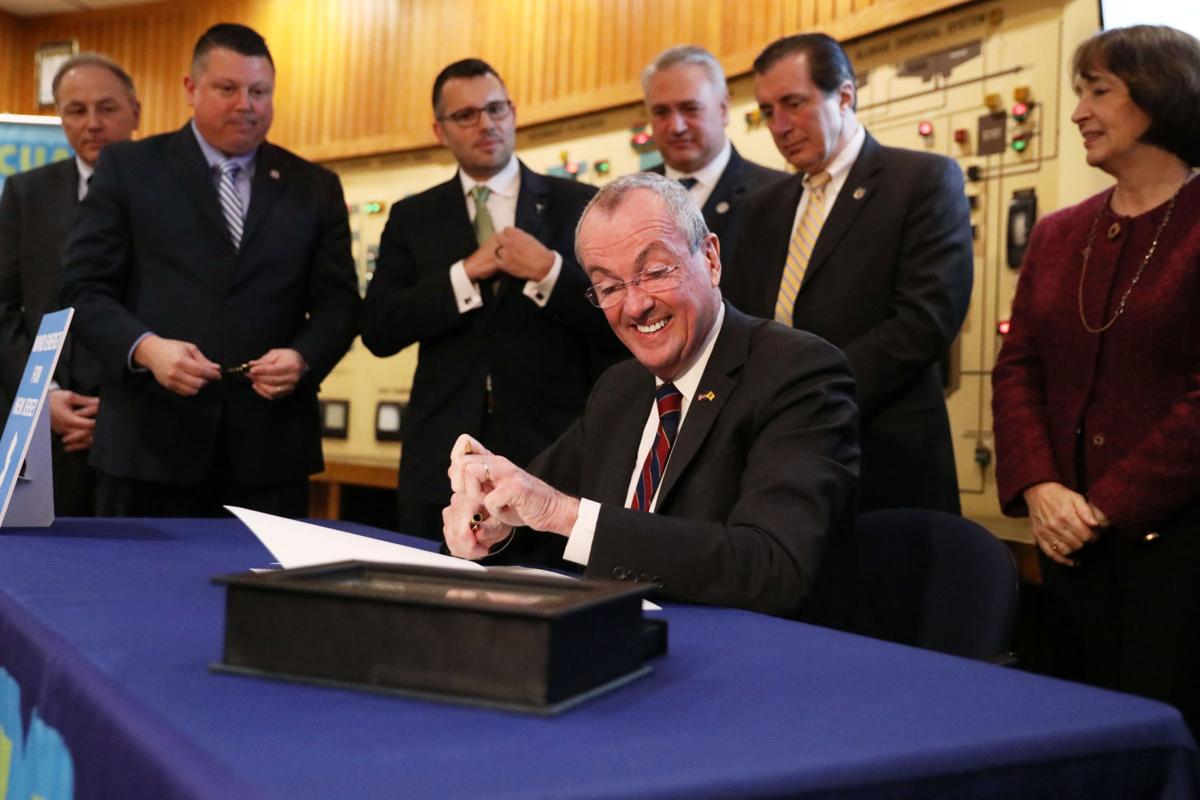Governor Phil Murphy signed an executive order Wednesday to
return the state to national leadership in offshore wind energy.
New Jersey will finally implement the Offshore Wind Economic
Development Act of 2010, which languished under Gov. Chris Christie, Murphy
said at a press conference at the Atlantic County Utilities Authority’s wind farm
and wastewater treatment plant.
The law creates ratepayer-financing of wind field
development through an Offshore Wind Renewable Energy Credit program. But
Christie’s administration never finalized regulations to implement it, and
developers have not received the approvals from the Board of Public Utilities
to move forward, Murphy said.
The order commits the state to quickly generate 1,100
megawatts annually of offshore wind energy, and 3,500 megawatts of generation
by the year 2030 — enough to power 1.5 million homes, according to Murphy.
“Thirty-five hundred megawatts would make us, I think, the
number one aspirational wind field in the world,” Murphy said. Scale,
reliability and predictability will make it possible to attract manufacturing,
the governor said.
Environment New Jersey Director Doug O’Malley said New York
and Massachusetts have goals of 2,400 and 1,600 megawatts, respectively.
State Senate President Steve Sweeney, a co-sponsor of OWEDA,
said the plan is not just to place windmills in the ocean, but to jump-start a
wind-energy manufacturing industry.
Murphy’s executive order directs the BPU to begin the
rulemaking process and to work with the Department of Environmental Protection
to establish an Offshore Wind Strategic Plan.
The BPU must implement a renewable energy credit program and
solicit for projects to generate 1,100 megawatts of electric power.
“This is great news for the people of New Jersey and a
positive step forward in bringing offshore wind to the state,” said Thomas
Brostrom, president of Orsted North America. The company holds a lease to
develop Ocean Wind, a project with the potential to generate 1,000 megawatts of
offshore wind about 10 miles off Atlantic City.
That’s enough to supply energy for 500,000 homes, Brostrom
has said. It is on track to open between 2020 and 2025 if renewable energy
credits are in place.
A second major wind development off the Jersey Shore is
planned for 183,353 acres leased by U.S. Wind Inc., while a small, 24-megawatt
offshore wind project by Fishermen’s Energy failed to meet federal government
deadlines to get funding. Its cost of providing energy was deemed too high by
New Jersey officials.
The order sends a clear message that New Jersey is serious
about being the greenest state in the country, while creating good-paying,
clean-energy jobs, said Ed Potosnak, executive director of the New Jersey
League of Conservation Voters.
“It’s hard to think of a more appropriate location than
Atlantic City for this announcement — a city that is both on the frontlines of
climate change and brimming with economic potential,” Potosnak said.
New Jersey Audubon President and Chief Executive Officer
Eric Stiles said his organization is happy that protection of wildlife is built
into the plan.
“New Jersey has to live up to its responsibility for global
warming, given how much of the coast is at stake for sea level rise,” Stiles
said.
On Monday, Murphy signed an executive order requiring the
DEP and BPU to take steps for New Jersey to rejoin the Regional Greenhouse Gas
Initiative.
And on Thursday, state Sen. Patrick Diegnan, D-Middlesex;
Assemblyman Tim Eustace, D-Bergen, Passaic; and several environmental
organizations will hold a press conference in Trenton on two clean-energy bills
(A1823 and S1405). They will require New Jersey to move to 100 percent clean
energy by 2035.


No comments:
Post a Comment